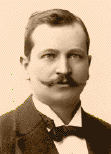| |

Home
Contact Info
Course Info
Calendar
Homework
Lecture Notes
|
|
|
|
PHY 521: Condensed Matter Physics I
Prof. S. Teitel stte@pas.rochester.edu ---- Spring 2014
Lecture Notes
My hand written class lecture notes are being scanned and uploaded for you to view. Please be warned that these are the notes I prepare for myself to lecture from - they are not in general carefully prepared for others to read. I make no guarantees about their legibility, or that they are totally free of errors. I hope, nevertheless that you will find them useful. The lectures are uploaded as pdf files, so you will need Adobe Acrobat Reader in order to read them. You can download Acrobat Reader for free here.
The lecture note files correspond roughly to the material presented in a given day's lecture. But you may on occassion find the end of one day's lecture at the start of the file for the next day's lecture, so please look there if you think there might be something missing.
- Lecture 1 - What is condensed matter physics? metals, Drude model, dc electric conductivity
- Lecture 2 - Hall effect, magnetoresistance, ac electric conductivity, EM wave propagation in metals, plasma frequency
- Lecture 3 - Thermal conductivity, Weidemann-Franz law, thermoelectric effect, free electron wavefunctions with periodic boundary conditions
- Lecture 4 - Sommerfeld model, quantum ground state of free electron gas, Fermi surface and Fermi energy, ground state energy, density of states, pressure, bulk modulus, ideal fermi gas at finite temperature
- Lecture 5 - Temperature dependence of the chemical potential, specific heat of electron gas, transport properties within the Sommerfeld model
- Lecture 6 - Magnetic properties: Pauli paramagnetism, Landau levels for orbital motion
- Lecture 7 - Landau diamagnetism at T=0
- Lecture 8 - de Haas - van Alphen effect, screening by the electron gas, Thomas-Fermi dielectric function, classical Debye-Huckle dielectric function
- Lecture 9 - Lindhard dielectric function, Friedel (Ruderman-Kittel) oscillations, Kohn effect, RKKY interaction
- Lecture 10 - RKKY interaction and the spin glass, plasmons
- Lecture 11 - Wigner crystal, Cooper pairs
- Lecture 12 - Bravais lattices and crystal structures
- Lecture 13 - Reciprocal lattice, Bragg and von Laue formulations of X-ray scattering
- Lecture 14 - X-ray scattering continued, X-ray scattering from Bravias lattice with a basis, preview of electrons in a periodic potential
- Lecture 15 - Preview continued: Bloch's theorem, energy gaps at Bragg planes, Brillouin zones, Born-von Karmen boundary conditions
- Lecture 16 - Fourier transforms on a Bravais lattice, Schrodinger's equation for electrons in a periodic potential, Bloch's theorem more rigorously, crystal momentum and band index
- Lecture 17 - Reduced, repeated, and extended zone schemes for electronic band structure, average velocity of a Bloch electron state, density of states, van Hove singularities, weak potential approximation for electron eigenstates
- Lecture 18 - Weak potential approximation and the band gap, velocity of electron at a Bragg plane, metals and insulators
- Lecture 19 - Weak potential approximation in 2D and 3D, Bravais lattice with a basis, Brillouin Zones and the Fermi surface in the weak potential approximation
The 2D Brillouin Zones in living color
- Lecture 20 - Open and closed Fermi surfaces, tight binding approximation for band structure, the s-band
- Lecture 21 - Fermi surface in tight binding, hybridization of atomic orbitals, variational derivation of tight binding
- Lecture 22 - Tight binding band structure for graphene
- Lecture 23 -Graphene continued, Wannier function, spin-orbit interaction
- Lecture 24 - Some discussion of real metals
- Lecture 25 - Semiclassical equations of motion, Bloch oscillations, effective mass, holes
- Lecture 26 - Motion in perpendicular electric and magnetic fields
- Lecture 27 - Hall effect and magnetoresistance from closed and open orbits, dynamical matrix
- Lecture 28 - Normal modes of ion lattice vibration, acoustic and optical modes,the Born-Oppenheimer approximation and the Bohm-Staver relation for the speed of sound
- Lecture 29 - The electron-phonon interaction, quantization of ion lattice vibrations, Debye model for specific heat due to lattice vibrations, electron-phonon scattering and Bloch's T5 law for metalic resistivity
|
|
